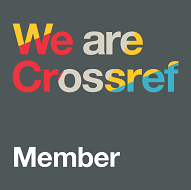Learning Styles, Does it Cause the Differences of Students Achievement?
Abstract
This research aims to examine the difference between the learning achievement of students with learning styles visual, auditory, and kinesthetic in Sub-district Sukun Malang. The type of this research was comparative quantitative. This research population was all 4th-grade students in Sub-district Sukun, which amount to 3250 students, while the technique of sample retrieval used random cluster sampling. Sample of this research amount to 338 of the 4th-grade students from 5 elementary schools in Sub-district Sukun. Data were collected by using learning style questionnaires and documents of students learning achievement. Data analysis of this research used quantitative statistics descriptive and analysis statistics nonparametric using the Kruskal-Wallis Test. The result of this research showed that the amount of significant value is 0.688, higher than 0.05, so it can be concluded that there is no difference in thematic learning achievement between a student who has visual, auditory, and kinesthetic learning styles.
Keywords
Full Text:
PDFReferences
Amin, A., & Suardiman, S. P. (2016). Perbedaan prestasi belajar matematika siswa ditinjau dari gaya belajar dan model pembelajaran. Jurnal Prima Edukasia, 4(1), 12. https://doi.org/10.21831/jpe.v4i1.7688
Awla, H. A. (2014). Learning styles and their relation to teaching styles. International Journal of Language and Linguistics, 2(3), 241. https://doi.org/10.11648/j.ijll.20140203.23
Bobbi, D. P., & Mike, H. (2016). Qauntum learning. PT Mizan Publika.
Dryden, G., & Voss, J. (1999). The learning revolution: to change the way the world learns. The Learning Web.
Gagne, R. M. (1970). The conditions of learning (Second Edi). Rinehart and Winston, Inc.
Gilakjani, A. P., & Ahmadi, S. M. (2011). The effect of visual , auditory , and kinaesthetic learning styles on language teaching. International Conferences on Social Science and Huminity, 5, 469–472.
Jilardi, D. A., Mahyuddin, R., Elias, H., Daud, S. M., & Shabani, J. (2011). Academic achievement of students with different learning styles. International Journal of Psychological Studies, 3(2). https://doi.org/10.5539/ijps.v3n2p186
Kayalar, F., & Kayalar, F. (2017). The effects of auditory learning strategy on learning skills of language learners (students’ views). IOSR Journal Of Humanities And Social Science (IOSR-JHSS, 22(10), 4. https://doi.org/10.9790/0837-2210070410
Kemendikbud. (2003). Undang-undang Republik Indonesia nomor 20 tahun 2003 tentang sistem pendidikan nasional.
Kennedy, L., Tipps, S., & Johnson, A. (2008). Guiding children’s learning of mathematics (Eleventh e). Thomson corporation.
Leasa, M., & Corebima, A. D. (2017). Emotional intelligence among auditory, reading, and kinesthetic learning styles of elementary school students in Ambon-Indonesia. International Electronic Journal of Elementary Education, 10(1), 83–91. https://doi.org/10.26822/iejee.2017131889
Mudjiono, D. (2009). Belajar dan pembelajaran. PT. Rineka Cipta.
Mutoharoh, E. D. (2011). Pengaruh gaya belajar dan kesulitan belajar terhadap prestasi belajar ipa pada siswa kelas iv SD Negeri Purwosuman 1 Sidoharjo Sragen tahun pelajaran 2010/2011.
Partovi, T., & Razavi, M. R. (2019). The effect of game-based learning on academic achievement motivation of elementary school students. Learning and Motivation, 68(June), 101592. https://doi.org/10.1016/j.lmot.2019.101592
Siegel, S. (1956). Nonparametric statistics for the behavioral sciences. McGraw-Hill Book Company,Inc.
Singh, V. (2017). Exploring the relationship between cognitive style and learning style with academic achievement of elementary school learners. Educational Quest- an International Journal of Education and Applied Social Sciences, 8(spl), 413–419. https://doi.org/10.5958/2230-7311.2017.00084.8
Sukayati, S., & Wulandari, S. (2009). Pembelajaran tematik di SD (A. Waluyati (ed.)). PPPPTK Matematika.
Sun, K. T., Lin, Y. C., & Yu, C. J. (2008). A study on learning effect among different learning styles in a Web-based lab of science for elementary school students. Computers and Education, 50(4), 1411–1422. https://doi.org/10.1016/j.compedu.2007.01.003
Vaishnav, R. (2013). Learning style and academic achievement of secondary school students. Voice of Research, 1(4), 1–4.
Winkel, W. S. (2007). Psikologi Pengajaran. Media Abadi.
DOI: http://dx.doi.org/10.17977/um048v25i2p82-87
Refbacks
- There are currently no refbacks.
Copyright (c) 2021 Jurnal Ilmu Pendidikan

This work is licensed under a Creative Commons Attribution 4.0 International License.
| Jurnal Ilmu Pendidikan |
![]() Jurnal Ilmu Pendidikan is licensed under a Creative Commons Attribution 4.0 International License.
Jurnal Ilmu Pendidikan is licensed under a Creative Commons Attribution 4.0 International License.

2.png)
1.png)
1.png)
1.png)
1.png)
4.png)
.png)
1.png)
.png)
.png)


3.png)
1.png)
1.png)


